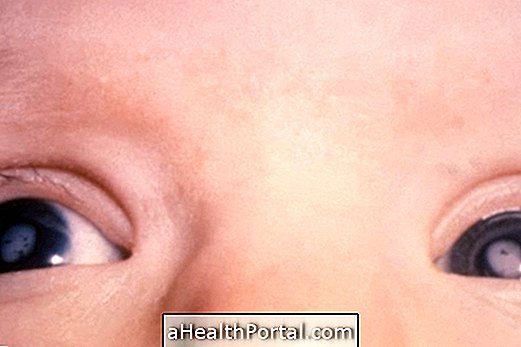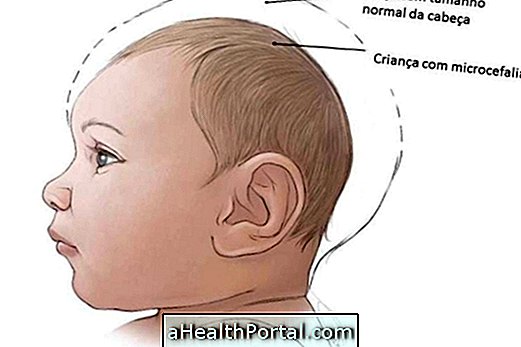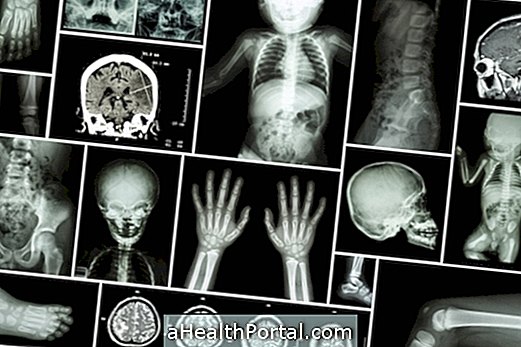Congenital cataract is a malformation of the lens of the eye that develops during gestation, so the baby is born with this change, causing a white film to exist within the eye.
This change can affect only one eye or both and usually has healing, through a simple surgery that replaces the lens of the baby's eye.
When there is suspicion about the existence of congenital cataract, an ophthalmologist should be consulted to take the red reflex examination and start the appropriate treatment. See how this exam is done.

Source: Centers for Disease Control and Prevention
Main symptoms
Congenital cataracts are present from the moment of birth, but in some cases, it may take several months before they are identified, when parents or other caregivers observe a whitish film within the eye, creating the sensation of an "opaque pupil" .
In some cases, this film may also develop and worsen over time, but when it is identified it should be informed to the pediatrician to start the appropriate treatment and avoid the appearance of difficulty to see.
How to confirm the diagnosis
The best way to confirm the diagnosis of congenital cataracts is by doing the red reflex, also known as the little eye test, in which the doctor projects a special light over the baby's eye to see if there are changes in the structures.
How is the treatment done?
Treatment for congenital cataracts depends on the severity of the disease, the degree of vision and the age of the baby, but is usually done with congenital cataract surgery to replace the lens, which should be done between 6 weeks of age and 3 months. However, this time may vary according to the doctor and the child's history.
Usually, the surgery is performed on an eye under local anesthesia and after 1 month is done on the other, and during recovery it is necessary to put some eye drops indicated by the ophthalmologist, to relieve the baby's discomfort and also to prevent the onset of an infection.
In cases of partial congenital cataract, the use of drugs or eye drops may be indicated instead of surgery.
What causes congenital cataract
Most congenital cataracts do not have a specific cause, but the most common ones include:
- Metabolic disorders in pregnancy;
- Infections of pregnant women with toxoplasmosis, rubella, herpes or cytomegalovirus;
- Deformities in the development of the baby's skull.
Congenital cataracts can also be caused by genetic factors, and a baby with the same cases in the family is more likely to be born with congenital cataracts.











-o-que--sintomas-e-tratamento.jpg)










